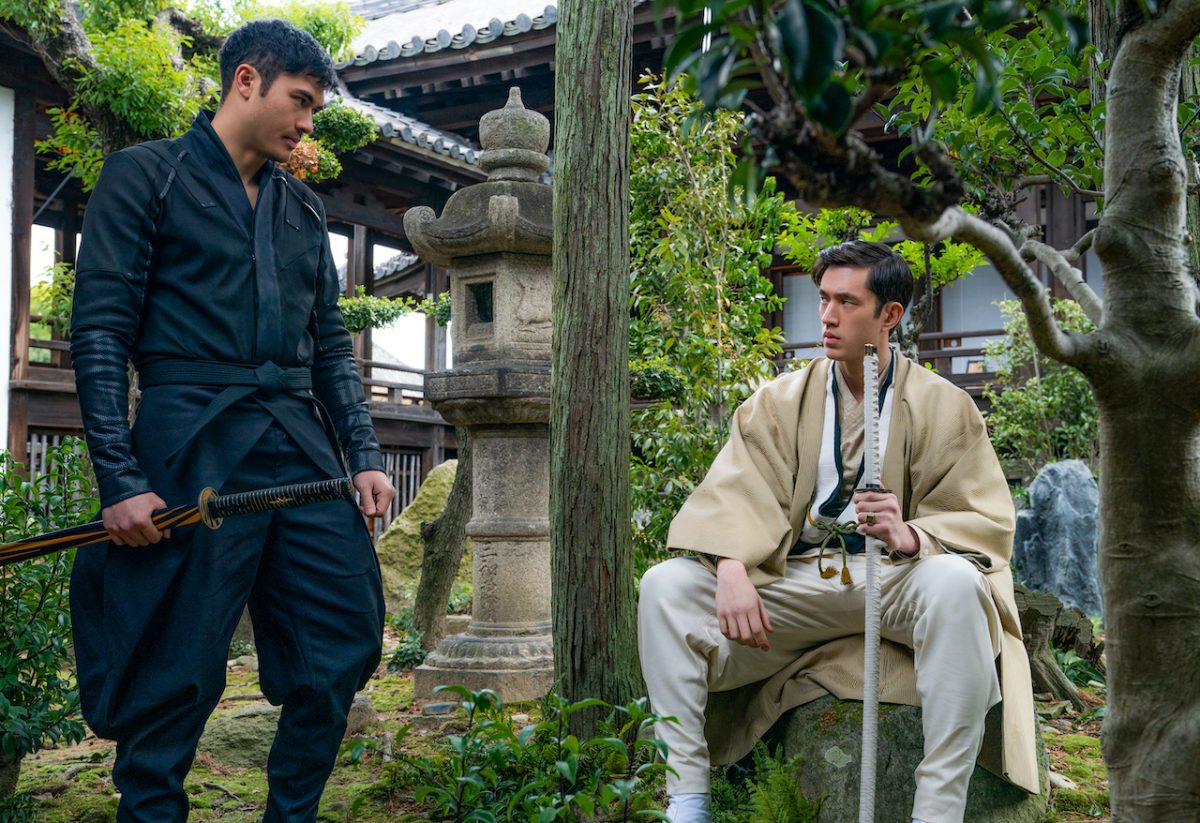At the start of the screening, Snake Eyes’ lead Henry Golding appears on the screen, beaming-smiled and mellow-voiced, thanking theatergoers and the people behind the film. There is a notable emphasis on the action designers. Sure, this is all a branding bit, but it might turn out to be a nice memory to store before cinemas are forced to re-shutter. Texas is on its way at this rate. Here’s something fun beforehand, at least.
And fun exists in Snake Eyes, most of it in the form of revisions to how Larry Hama originally envisioned the G.I. Joe ninja. Don’t tell the purists. He is Asian now. There’s no longer a past where he trades bullets on the Vietnamese battlefield. It’s so 2009 that he’s a hungry weakling who knows martial arts. Most importantly, he talks, which is ideal when assessing how Snake is attuning to his place among the Arashikage Clan of Storm Shadow (Andrew Koji) and trying to find the dice-rolling mob boss who killed his dad (Steven Allerick) decades ago.
Superficially, the character’s unsilencing lets Golding show his chords are as smooth and cool as a lot of those around him. The Storm Shadow that Koji renders can equally calm and scare with firm whispers. When Akiko (Haruka Abe), the clan’s chief security officer, questions you, it’s wiser not to lie. Yays and nays from the clan’s matriarch, Sen (Eri Ishida), are absolute. Every word crime-boss Kenta (Takehiro Hira) lets out is slippery, but every word brings revenge closer for Snake Eyes.
Problems arise, though, on the visual side of things.

Everyone looks great—X-Men franchise’s Louise Mingenbach’s suits and coats, modern and traditional, make everyone eligible for Ninja GQ—but some can emote better than others. Director Robert Schwentke is helming two different groups of actors at once here, and those in Snake Eyes clearly outperform those in (this version of) G.I. Joe. Well, Golding could have explored Snake’s more primal and potentially uncontrollable emotions more thoroughly, but he still fares better than the duo meant to connect the ninja to the toy line, Baroness (Úrsula Corberó) and Scarlett (Samara Weaving).
On a more granular level, Corberó, with her character’s black-rimmed glasses and a sultry-esque superiority complex, visibly has more lightness and awareness of the project she’s in, but she’s unfortunately tied to tie-ins, which writers Evan Spiliotopoulos, Joe Shrapnel, and Anna Waterhouse fail to have us going “Yo!” In fact, whenever the G.I. Joe elements are present, gears that make Snake Eyes slither—the revenge, the clandestine infiltration, the ninja training, the brotherhood, and the prelude to a classic rift—all come to a halt.
There is one more visual issue, and it’s even graver.
Why hire names known in action circles like Kenji Tanigaki, Iko Uwais (playing Hard Master), Peter Mensah (playing Blind Master), and Koji himself, only to put their work through a shredder? Perhaps Schwentke, DP Bojan Bazelli and editor Stuart Levy want this down-and-dirty vibe to blend with the gleaming blockbuster spectacle, much like how myth seamlessly lives beside modernity in these stunning sets. But the result is too much noise added to the action design. It’s chaotic, but also arresting.
What we have now, while not totally incomprehensible, doesn’t prove the people whose job is capturing clashing katanas, flying kicks, and intimidating stances really know what they’re doing—or who they’re having. The proof is in that patchy and disengaged Big Battle (yet it’s further evidence that Koji’s Storm Shadow is the true star of Snake Eyes).
Ah, fun never lasts. For this movie, it begins its departure at the halfway mark. Snake Eyes may be based on (or better known as) a toy, but it does seem to host one of the more potent “art imitates life” moments in recent memory.
Advertisement
Snake Eyes: G.I. Joe Origins is in cinemas on July 23. You can watch the trailer here.
Advertisement







